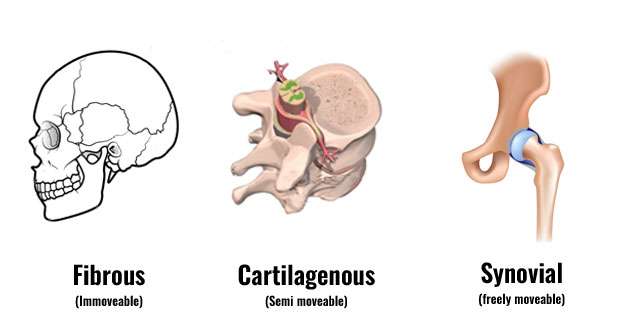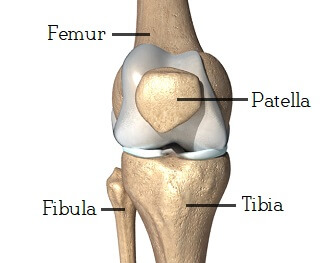A Diagram Of Joints And Bones In The Human Body / Knee Joint Picture Image On Medicinenet Com - The largest bone in the human body is the thighbone or femur, and the smallest is the stapes in the middle ear, which are just 3 millimeters (mm) the mineral calcium phosphate hardens this.
A Diagram Of Joints And Bones In The Human Body / Knee Joint Picture Image On Medicinenet Com - The largest bone in the human body is the thighbone or femur, and the smallest is the stapes in the middle ear, which are just 3 millimeters (mm) the mineral calcium phosphate hardens this.. The bones provide a structural framework and protection to the soft organs. Main joints of the body. • held together by ligaments and tendons two main ball and socket joints: The skeleton of the human body is made out of bones and the cartilage supporting those bones. If bones provide the framework, the joints provide the flexibility by permitting movement.
With the help of muscles, joints work like mechanical levers, allowing the body to move with relatively little force. The human body has three main types of joints. It bears our body's weight and the force of the strong muscles of the hip and leg. Synovial joints are by far the most common classification of a joint within the human body. The longest and the strongest bone in the human skeletal system as you can observe in the labeled skeleton diagram of the human body.

Joints • of all the joints in the body, the ball and socket joint allows the greatest range of movement • in this type of joint, one end of the bone is shaped like a ball, and it fits into a hollow socket at the end of another joint.
The largest bone in the human body is the thighbone or femur calcium balance: If you missed the other parts of our human body study, you can see them here: They are highly moveable and all have a synovial capsule (collagenous structure) surrounding the entire joint, a synovial membrane (the inner layer of the capsule) which secretes synovial fluid (a lubricating liquid) and cartilage known as hyaline cartilage which. The human body has three main types of joints. There are 206 bones in human body. That is an organization of joints by structure. Bones help in maintaining joint stability only in the firm type of joints, like the hip and ankle. Therefore, the leg bones work like an extensible movable axis, on which the main pelvic girdle is balanced and propelled at the hip joint. The function of the stapes is to transmit sound vibrations from the incus to the labyrinth of the inner ear. Ball and socket joints, like your hip and shoulder joints, are the most mobile type of joint in the human body. Other sesamoid bones can form in the joints of the hands and feet, but are not present in all people. Joints are held intact by tough skeletal. If bones provide the framework, the joints provide the flexibility by permitting movement.
Joints hold the skeleton together and support movement. There are 206 bones in human body. A gomphosis is an exception to the rule that joints connect bone. They are highly moveable and all have a synovial capsule (collagenous structure) surrounding the entire joint, a synovial membrane (the inner layer of the capsule) which secretes synovial fluid (a lubricating liquid) and cartilage known as hyaline cartilage which. It allows us to walk, run, and jump.

Ball and socket joints, like your hip and shoulder joints, are the most mobile type of joint in the human body.
Identify and explain the 3 range of motions found in human joints. A diagram of joints and bones in the human body / some of them let you move in only one direction, others allow you to move freely in many directions. They also provide for the attachment of muscles, and help us move around. The largest bone in the human body is the thighbone or femur calcium balance: The skeleton of the human body is made out of bones and the cartilage supporting those bones. Bones, joints and muscles, senses, cells, heart, blood and circulation, digestive system and nutrition, the brain and nervous system, the skin, hair and nails, the immune system and germs, the respiratory system, the excretory system, reproduction. Bones of these joints fit together like a ball in a socket i.e. The patella and the pisiform bone of the carpals are the only sesamoid bones that are counted as part of the 206 bones of the body. One way to learn all the bones in the human body is to. The hip joint is one of the most important joints in the human body. There are two ways to categorize joints. There are three main types: Ball and socket joints, like your hip and shoulder joints, are the most mobile type of joint in the human body.
Ball and socket joints, like your hip and shoulder joints, are the most mobile type of joint in the human body. It bears our body's weight and the force of the strong muscles of the hip and leg. The leg bones are involved mainly in propulsion and support. It is the smallest bone in the human body. Main joints of the body.

The human body contains five organs that are considered vital for survival.
In such joints, bones have been fused together in such a way that they are fixed to that part, most commonly to create a structure. Bones, joints and muscles, senses, cells, heart, blood and circulation, digestive system and nutrition, the brain and nervous system, the skin, hair and nails, the immune system and germs, the respiratory system, the excretory system, reproduction. • held together by ligaments and tendons two main ball and socket joints: Therefore, the leg bones work like an extensible movable axis, on which the main pelvic girdle is balanced and propelled at the hip joint. It bears our body's weight and the force of the strong muscles of the hip and leg. Bone basics and bone anatomy. It is the smallest bone in the human body. In the human body diagram of muscle and joints.human muscle system, the muscles of the human body that work the skeletal system, that are under voluntary control, and that are concerned with movement, posture, and balance. The largest bone in the human body is the thighbone or femur calcium balance: A diagram of the human skeleton showing bone and cartilage. The human body has three main types of joints. And these structures are called ligaments. The surfaces of bones at joints are covered with a smooth layer of cartilage that reduces friction at the points of contact between the bones.
Komentar
Posting Komentar